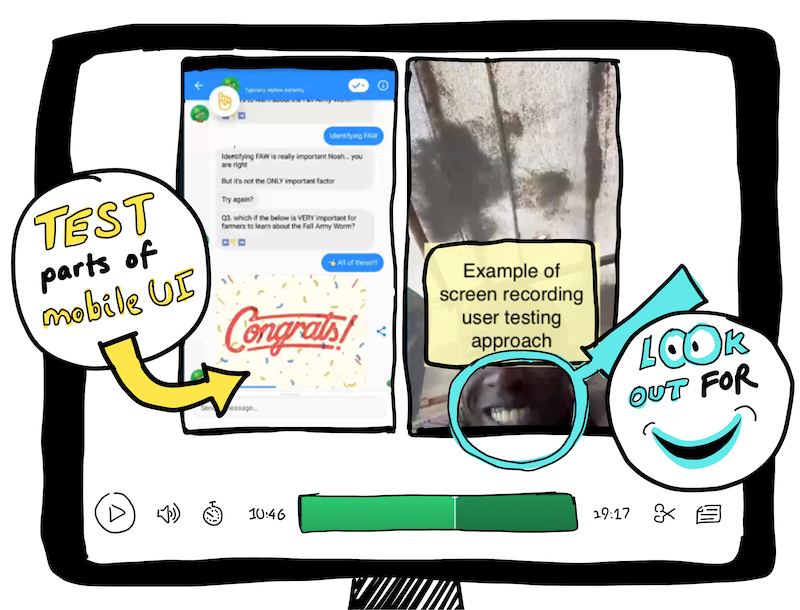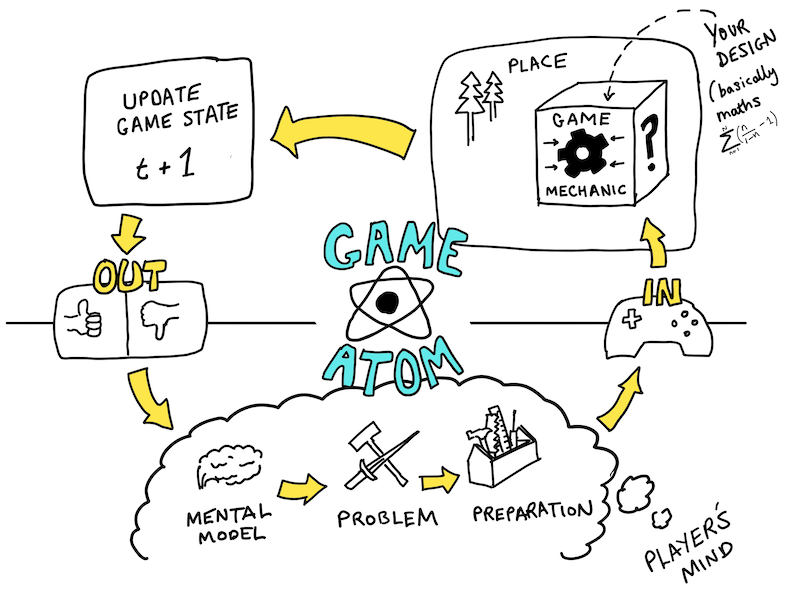Let us know what type of content you'd like to see more of. Fill out our three question survey.
Game Mechanics—Great Tool for Designing Digital Development Services
Mar 28, 2019
📱 Smartphone connections continue to rise and people, globally, love to game. The Global Systems for Mobile Communications Association (GSMA) estimates that by 2025 78 percent of all developing market mobile connections will be smart. By that time GSMA predicts that India will be the second-largest smartphone market by adoption globally (ahead of the United States), with 1 billion smartphone connections. Interestingly, India is already among the top five mobile gaming countries globally, expected to surge to 368 million gamers in 2022. If this is a bellwether for developing markets, we can expect gaming to be a significant force across the global south.
🕹 Gamers are empowered learners. In 2010, game designer Jane McGonigal argued we need “21 billion hours of gameplay per week” to help solve some of humanity’s toughest challenges. Why? Because gamers are “super-empowered, hopeful individuals,” who are amazing at collaborating online and learning new things. There are some fascinating examples, such as blockbyblock, which uses Minecraft to help urban planning in Nairobi, or GRID, which sets out to affect social change with interactive apps catered to “the bottom billion.” These trends seem to get most attention in the education technology sphere when it comes to funding and policy-making decisions, but capitalizing on the power of games can cut across almost all sustainable development sectors.
🔑 The key is, the learning outcome of the game is determined by the product designer. That’s where the potential to address international development challenges comes in. Stop thinking of games in terms of ‘making Candy Crush for X,’ and start thinking of them as design patterns to inform better product design.
How Games Informed a Farming Challenge: Fall Armyworm Tech Prize
🐛 The Fall Army Worm Tech Prize (FAW) started us off on an unexpected path to more deeply incorporating game design into our work. The FAW prize gave us a solid agronomic basis—notably the IPM guide—on which to research a solution for our existing base of 100,000 farmers. The availability of this research and the detailed design challenges it articulated enabled us to move faster on prototyping a digital solution.
🔧 User testing has been our secret sauce. When designing our digital products with farmers, user testing has always been central. Our product prototyping is heavily influenced by the books Sprint, and Rocket Surgery Made Easy. These books detail the ‘how-to’ of user testing. I recommend both. But here’s a secret we learned above and beyond anything we read in a book. To look out for this… 👇

An example screen recording from our user testing of the FAW prototype (with some additional annotations).
😁 …a beaming SMILE. When a user tries something out, you really can’t miss their smile. Incidentally, some of the FAW solution prototypes we developed used simple games, and we found an abundance of smiling reactions (the example above comes from a recorded user test of our FAW prototype). This type of consistent positive reaction is what got us researching game design more thoroughly.
Focus on the Fun
🚫 What we’re not interested in here is ‘gamification.’ This was a key learning for us early on, and the point is laid out nicely by Raph Koster in his book, A Theory of Fun:
“There is a design practice called ‘gamification,’ which attempts to use the trappings of games (reward structures, points, etc.) to make people engage more with product offerings… A reward structure alone does not a game make…”
“Fun, as I define it, is the feedback the brain gives us when we are absorbing patterns for learning purposes…” [if you are going to make a game] “your sole responsibility is to know what the game is about and to ensure that the game teaches that thing. That one thing, the theme, the core, the heart of the game, might require many systems or it might require few. But no system should be in the game that does not contribute towards that lesson.”
👾 Instead, think about a ‘game atom.’ Being inspired by game design patterns doesn’t mean everything has to look or feel like a canonical game, as Koster notes, “The part of games that is least understood is the formal abstract system portion of it, the mathematical part of it, the chunky part of it.” The basic model, which a product designer can make use of, is illustrated below. But, if you want to learn more, I recommend watching this talk starting from the 30’ mark, to understand the notion of a “game atom.”

Diagram of “game atom” (my adaptation of Koster’s diagram).
🖇How can we practically incorporate this concept? At the heart of Koster’s talk, is that games are best understood mathematically. There is a wealth of understanding already developed around such mathematics and game mechanics that can be used in the sphere of digital development. If you want to get a flavor of what core mechanics look like in games, check out these slides on understanding game mechanics for social games (note: social here means many players together, not socio-economic impact). This just scratches the surface, but can start us on the path to a deeper understanding of games and how games can be used to address global sustainable development challenges.
Of course, games are not a panacea, they are just one element to our approach to build better products for a digital farming audience. But they are powerful, and something with great cross-cutting potential into the area of digital development.
If any of the ideas interest you, I’d recommend reading the following:
-
A theory of fun, Koster
-
Rocket surgery made easy, Krug
-
Sprint, Knapp, Zeratsky, Kowitz
Want to Stay Updated?
📩 Interested in keeping tabs on our thinking on topics like this and our journey incorporating these ideas into our digital farming products? Subscribe to our newsletter here.
Adam is one of the co-founders of farm.ink.